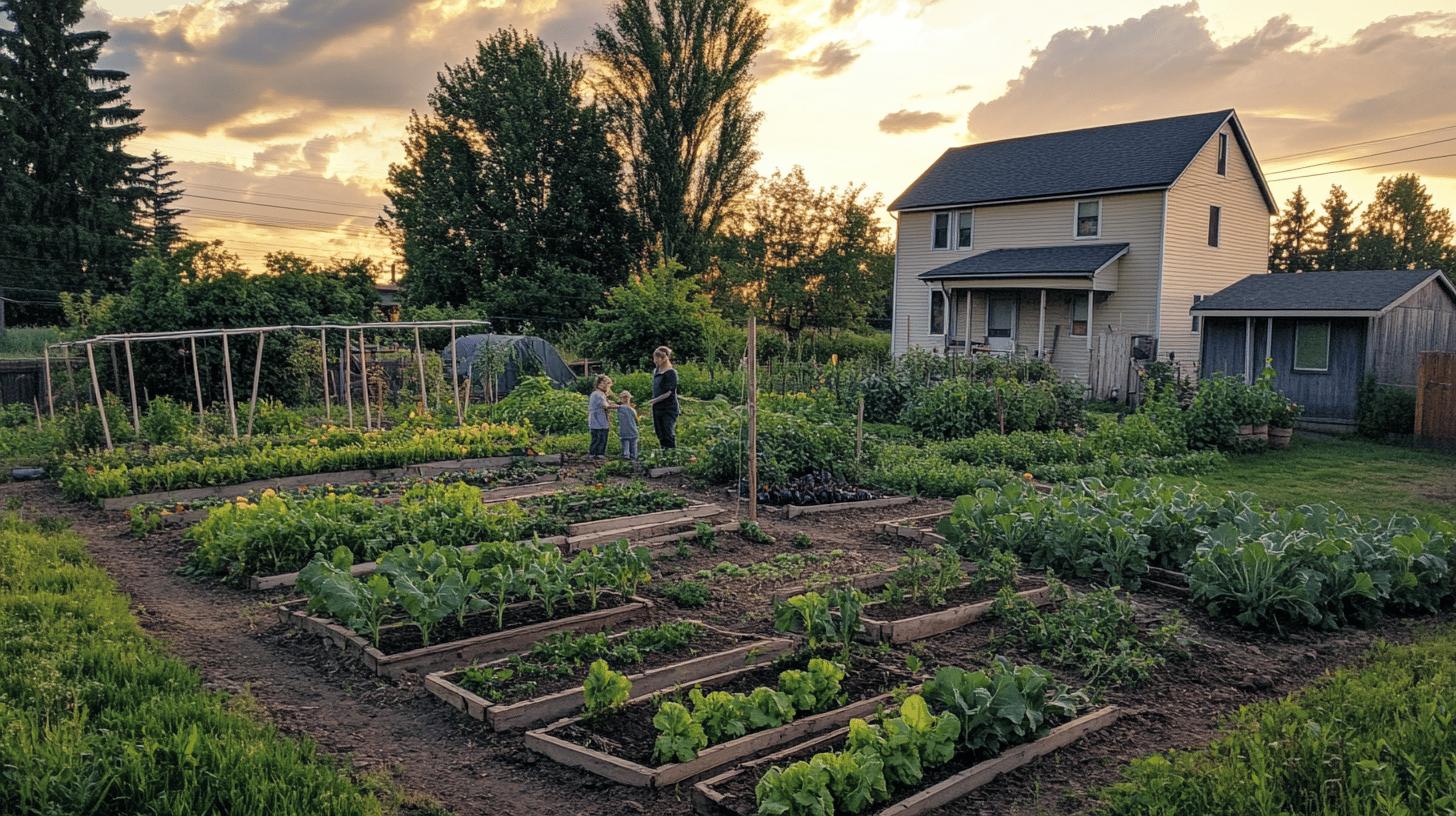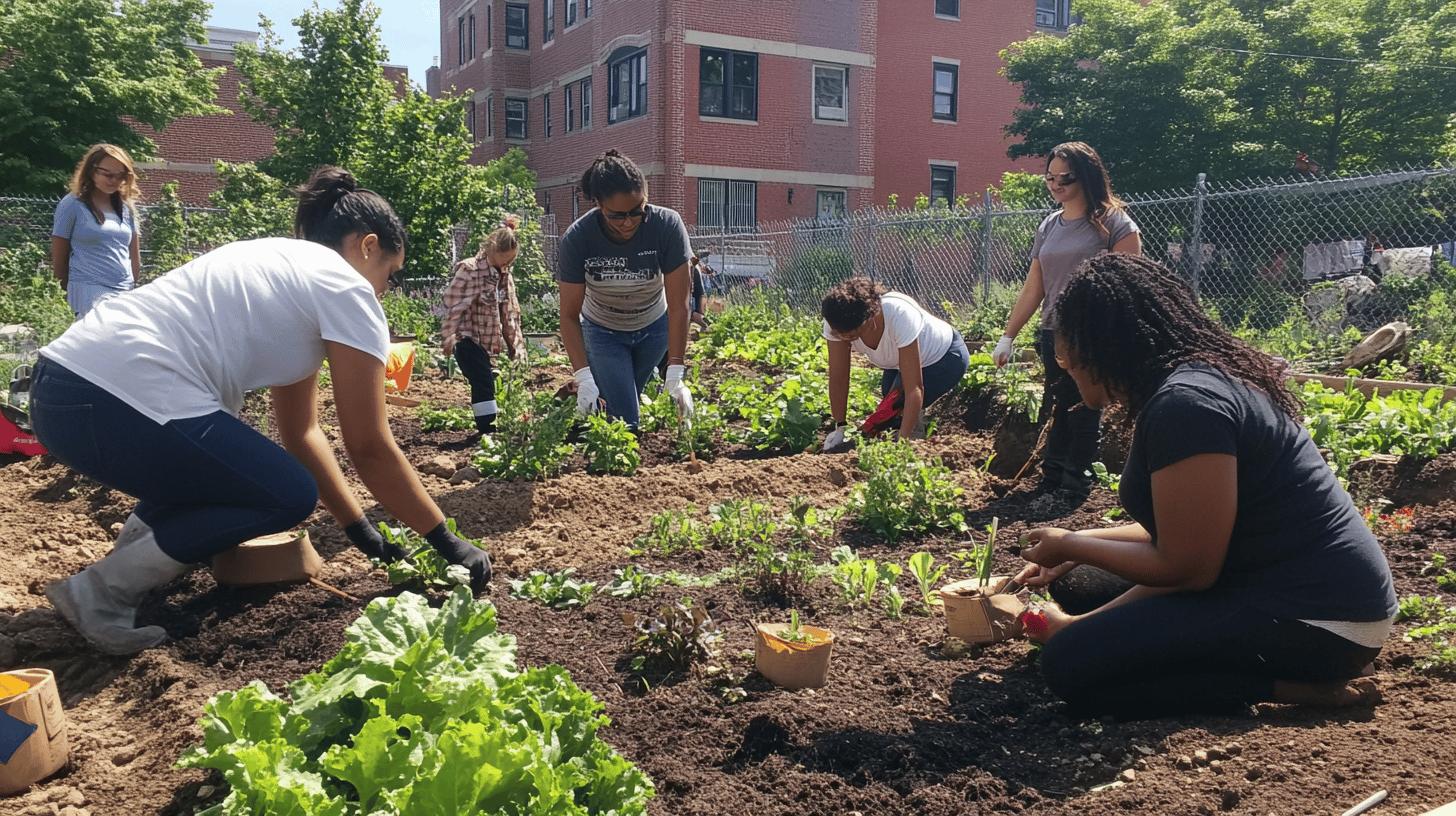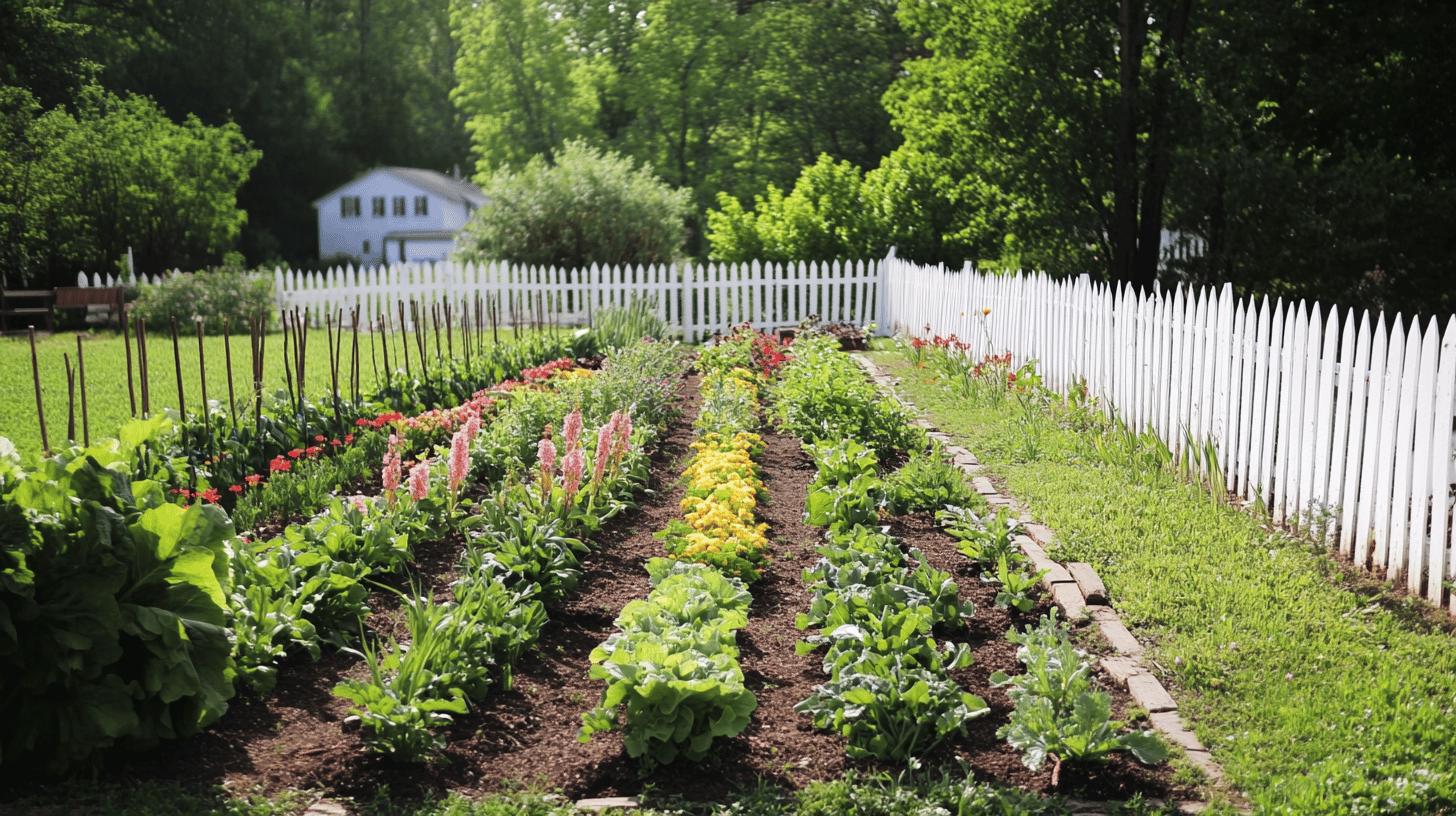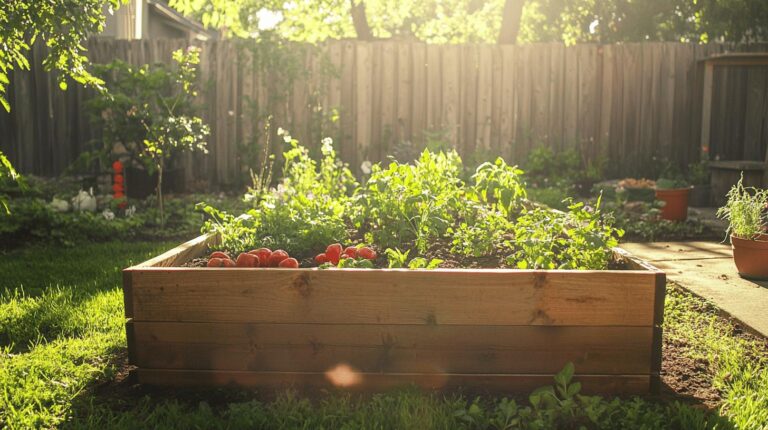Victory Garden History: Patriotic Roots and Impact
Did you know that during both World Wars, the simple act of planting a garden was considered a patriotic duty? The Victory Garden movement, sparked by food shortages, was more than just a home gardening trend; it was an emblem of national unity and self-sufficiency. As we dive into the history of these War Gardens, we’ll uncover how Charles Lathrop Pack’s vision cultivated not just crops, but an entire movement. Let’s explore the origins and profound impact of these gardens on society’s fight against scarcity and their lasting legacy in today’s world.
The Emergence of Victory Gardens
During the tumultuous times of World Wars I and II, food shortages became a pressing issue on the home front. As resources were redirected to support military efforts, civilians faced dwindling supplies and rationing. In response, Victory Gardens, also known as War Gardens, were introduced as a way to supplement the public food supply. These gardens transformed urban and suburban spaces into productive plots, allowing citizens to grow their own vegetables and fruits. The initiative wasn’t just about addressing food scarcity; it became a symbol of patriotism, as individuals contributed directly to the war effort from their own backyards.
Charles Lathrop Pack, a businessman and forestry expert, played a pivotal role in the birth of Victory Gardens. In 1917, he introduced the concept as a strategic response to the food shortages in the United States. By leading the U.S. National War Garden Commission, Pack emphasized the importance of backyard food production and rallied for national participation. His efforts laid the groundwork for a widespread movement that encouraged self-sufficiency and national unity.
- Alleviate food shortages during wartime
- Promote self-sufficiency among civilians
- Foster national unity and patriotism
- Utilize urban and suburban spaces efficiently
The public reception of Victory Gardens was overwhelmingly positive. As families and communities embraced the idea, the gardens quickly became a source of pride and purpose. They provided a hands-on way for civilians to feel connected to the war effort, fostering a sense of accomplishment and contribution. These gardens weren’t just about food; they were a testament to the resilience and collective spirit of the nation during challenging times.
Victory Gardens During World War I
Charles Lathrop Pack was a key figure in the promotion of Victory Gardens during World War I, spearheading the U.S. National War Garden Commission. His efforts were crucial in encouraging backyard food production to alleviate food shortages. Pack’s initiative turned everyday citizens into active participants in supporting the war effort by growing their own food. The gardens became a national movement, with government encouragement playing a significant role in their success. This initiative not only helped to ease the burden on the national food supply but also fostered a sense of unity and patriotism among Americans.
The involvement of schoolchildren in this effort was particularly noteworthy. Dubbed “soldiers of the soil,” these young gardeners were organized as part of the United States School Garden Army. They planted and maintained War Gardens, contributing significantly to the homefront effort. This program provided children with a unique opportunity to contribute to the war effort, instilling a sense of responsibility and teaching valuable agricultural skills.
| Effort | Impact |
|---|---|
| Backyard Food Production | Increased self-sufficiency and reduced pressure on public food supplies |
| U.S. National War Garden Commission | National coordination of Victory Gardens and promotion of gardening practices |
| United States School Garden Army | Engaged youth in agricultural production, fostering skills and patriotism |
Revival and Expansion in World War II
Victory gardens saw a significant revival during World War II due to pressing food shortages and strict rationing measures. The government realized that encouraging citizens to grow their own food could alleviate the burden on the public food supply. This initiative was not just practical but also served as a powerful tool of propaganda, symbolizing self-reliance and national unity. As a result, victory gardens sprouted in backyards, vacant lots, and public parks, transforming urban spaces into productive plots. The call to action was clear: grow your own vegetables to support the war effort and ensure a steady food supply for everyone.
Eleanor Roosevelt’s Influence
Eleanor Roosevelt played a pivotal role in promoting victory gardens during this era. By planting a victory garden on the White House lawn, she sent a strong message to the American public about the importance of home gardening. This action not only highlighted the necessity of self-sufficiency but also underscored the commitment of the nation’s leaders to the cause. Her influence helped to normalize the practice of home gardening and inspired countless families to start their own plots, turning the act of gardening into a patriotic duty.
The Scale of Participation
The scale of participation in the victory garden movement was truly astounding. At its peak, approximately 20 million gardens were established across the United States. This massive citizen involvement resulted in these gardens producing more than 40% of the fresh fruits and vegetables consumed during the war. The collective effort demonstrated the power of community and the profound impact of individual contributions on a national scale. Through posters, radio broadcasts, and community events, citizens were continually encouraged to partake in this vital endeavor.
With an array of vegetables like kale, lettuce, beans, and carrots being cultivated, urban gardening efforts flourished. These gardens not only provided essential nutrition but also offered a sense of accomplishment and purpose to those tending them. The variety of crops grown catered to different climates and soil conditions, ensuring that even the smallest plots could contribute to the food supply. This widespread gardening effort transformed the way Americans approached food production, paving the way for future urban gardening initiatives.
Impact on the Homefront

Victory gardens were remarkable contributors to the food supply chain during both World Wars. By producing over 40% of the fresh fruits and vegetables consumed in the United States at the time, these gardens alleviated the strain on commercial agriculture. This was crucial in ensuring that more resources could be directed toward the war effort, as large-scale farms focused on crops needed for military and allied support. The decentralized production of food not only increased availability but also reduced the need for transportation, conserving fuel and other resources.
- Encouraged family collaboration and shared responsibilities
- Fostered a sense of independence and self-sufficiency
- Enhanced food security and dietary variety
- Provided educational opportunities in agriculture and nutrition
- Strengthened community bonds through shared gardening efforts
Public and private spaces were transformed in the quest to maximize food production. Private backyards became thriving vegetable patches, while community plots in parks and vacant lots brought neighbors together in a collective effort. Even the smallest areas were utilized, from containers on porches to rooftop gardens in urban settings. The ingenuity in finding and converting spaces for gardening demonstrated the adaptability and resourcefulness of the American people. These efforts not only supplied vital nourishment but also turned gardening into a patriotic act, reinforcing the homefront’s significance in the broader war effort.
Victory Garden Design and Maintenance
Victory gardens were meticulously designed to make the most of every available inch, ensuring maximum productivity. Common layouts involved straight rows and raised beds, which allowed for efficient use of space and facilitated easy access for maintenance. Rows provided a structured approach, making it easier to rotate crops and manage soil health. Raised beds were particularly popular because they offered better drainage and could be built to accommodate various soil depths, making them adaptable to different environments. This thoughtful planning was crucial, especially in urban settings where space was limited, and the demand for productivity was high.
- Regularly check soil pH levels to maintain optimal growing conditions.
- Implement crop rotation to preserve soil nutrients and reduce pest buildup.
- Use organic compost to enrich soil fertility and structure.
- Practice consistent watering schedules to prevent stress on plants.
- Monitor and manage pests with natural deterrents like companion planting.
Gardeners faced numerous challenges in maintaining their victory gardens. Pest management was a constant battle, requiring vigilance and innovative solutions. Weather conditions also posed significant hurdles, with droughts or excessive rain impacting crop yields. Despite these obstacles, the determination to contribute to the war effort kept gardeners motivated and resourceful, leading to the development of effective strategies that enhanced garden resilience and productivity.
Community and Cultural Influence of Victory Gardens

Community gardens played a pivotal role in the success of victory gardens, acting as hubs of neighborhood collaboration and resource sharing. During times of war, these gardens became vital in promoting self-sufficiency, while also fostering a sense of community resilience and solidarity. Neighbors came together to share seeds, tools, and gardening techniques, turning what might have been solitary endeavors into collective efforts. This cooperation not only bolstered food production but also strengthened social ties, as people from diverse backgrounds worked side-by-side towards a common goal. The shared experience of cultivating and harvesting food helped to bridge cultural gaps, creating a shared sense of purpose and community identity.
Fenway Victory Gardens
The Fenway Victory Gardens in Boston stand as a lasting testament to the historical significance and continuity of community gardens. Established in 1942, these gardens are part of Frederick Law Olmsted’s Emerald Necklace and provide a glimpse into the wartime spirit of cooperation and determination. Spanning 7.5 acres, the Fenway Victory Gardens continues to thrive today, maintained by over 475 members from various Boston neighborhoods. This diversity is a reflection of the city’s cultural mosaic, with each garden plot telling a unique story of heritage and tradition. The ongoing operation of these gardens underscores their enduring value and the important role they play in preserving the cultural legacy of victory gardens.
Cultural Symbolism
Victory gardens became symbols of cultural heritage and patriotic duty, representing the collective effort of citizens to support their country. These gardens were not just about food production; they embodied the spirit of resilience and resourcefulness that characterized the home front during wartime. As cultural symbols, they showcased the ability of communities to adapt and thrive under challenging circumstances, preserving traditions and fostering innovation. The gardens served as living reminders of the sacrifices and contributions made by everyday citizens, reinforcing the notion that everyone could play a part in the nation’s success. This legacy of unity and shared responsibility continues to inspire modern urban gardening movements, echoing the values of cooperation and cultural pride.
The broader societal effects of victory gardens extended beyond food production, influencing community dynamics and cultural attitudes. By turning vacant lots and public spaces into productive gardens, neighborhoods were transformed, enhancing urban landscapes and instilling a sense of pride among residents. The practice of gardening encouraged environmental stewardship and sustainability, values that remain relevant today. Victory gardens also provided educational opportunities, teaching new generations about agriculture and nutrition, and instilling appreciation for local food sources. This cultural shift towards self-reliance and community engagement laid the foundation for contemporary community gardening initiatives, demonstrating the lasting impact of victory gardens on societal values and practices.
The Legacy of Victory Gardens
Victory gardens have left an indelible mark on how we approach food production and community engagement. Their relevance continues today, as many people seek ways to reduce their environmental impact. The modern revival of these gardens reflects a growing awareness of sustainability and local food systems. By embracing the principles of victory gardens, people are not only reviving a historical practice but also addressing contemporary issues like climate change. Growing food locally reduces the need for long-distance transportation, significantly decreasing the carbon footprint associated with our meals. This shift towards self-sufficiency and environmental consciousness is a testament to the enduring influence of victory gardens.
The lessons of sustainability learned from victory gardens are incredibly valuable. They teach us about the importance of resource efficiency, such as using compost to enrich soil and employing companion planting to manage pests naturally. These practices help maintain ecological balance and soil health, crucial components of sustainable gardening. By incorporating these techniques, gardeners can create thriving ecosystems that require fewer chemical inputs and promote biodiversity. The emphasis on local food production also encourages seasonal eating, which further reduces reliance on imported goods and supports local economies.
Inspiring current urban gardening initiatives, the legacy of victory gardens can be seen in community plots and rooftop gardens across cities. These modern adaptations foster community spirit and provide educational opportunities for urban dwellers. By connecting people to their food sources, urban gardening initiatives help cultivate awareness about food security and nutrition. They also create green spaces that enhance urban environments and offer respite from city life. The principles of victory gardens continue to guide us toward a more sustainable and connected future, proving that the seeds of the past can indeed yield the fruits of tomorrow.
Final Words
Throughout the history of victory gardens, it’s clear their roots run deeper than just plots in backyards. These gardens emerged in a time of crisis, offering sustainable solutions to food shortages and solidifying their place as cultural and patriotic symbols. Whether inspired by Eleanor Roosevelt or formed within community circles like the Fenway Gardens, the impact on neighborhoods can’t be underestimated.
Today, their legacy lives on, guiding us toward modern solutions for ecological and urban gardening challenges. As we revisit and adapt these practices, victory garden history remains a testament to resilience and communal effort.
FAQ
What is the history of Victory Gardens?
Victory Gardens, originally known as War Gardens, emerged during World Wars I and II to address food shortages. Charles Lathrop Pack introduced them in 1917 as acts of patriotism. They played a significant role in supplementing the public food supply.
Were Victory Gardens used during both World Wars?
Yes, Victory Gardens were utilized during both World War I and World War II. In both instances, they were encouraged to combat food shortages and support the war effort.
Why were Victory Gardens important?
Victory Gardens were vital as they provided approximately 40% of the fresh produce consumed on the homefront during the wars. They alleviated pressure on public food supplies and rallied citizens in a communal effort.
How many vegetables were produced by Victory Gardens?
During the wars, Victory Gardens contributed over 40% of the nation’s fresh produce, significantly bolstering the food supply when resources were scarce.
Do Victory Gardens still exist today?
Some Victory Gardens have continued or been revived as community gardens, fostering local sustainability and acting as educational resources about food production and self-sufficiency.
Did Americans participate in the Victory Garden effort?
Americans enthusiastically embraced the Victory Garden effort, resulting in around 20 million gardens during World War II. These gardens were planted by citizens in backyards, community spaces, and even at the White House, thanks to Eleanor Roosevelt.
What does the poster “Plant a Victory Garden” mean?
The “Plant a Victory Garden” poster was part of a government initiative encouraging citizens to grow their own food as a patriotic act, supporting the war effort by conserving resources for soldiers.
Why did Victory Gardens stop?
Victory Gardens declined after the wars ended due to decreased necessity and the restoration of commercial agriculture and food supplies. The communal urgency diminished, leading many to abandon their gardens.






